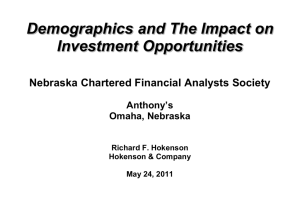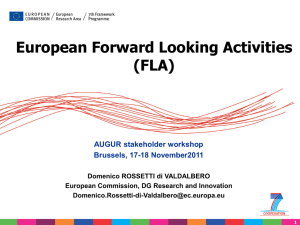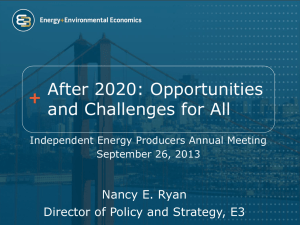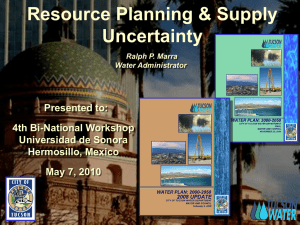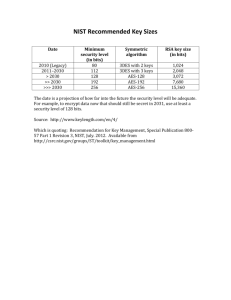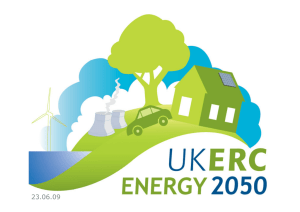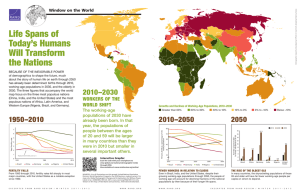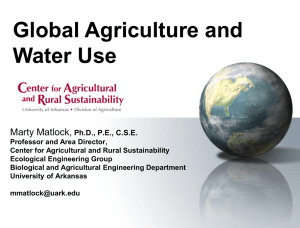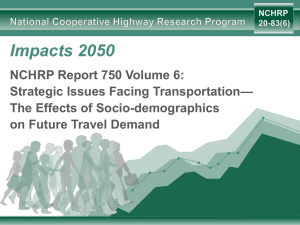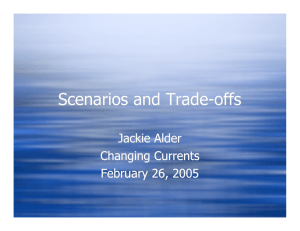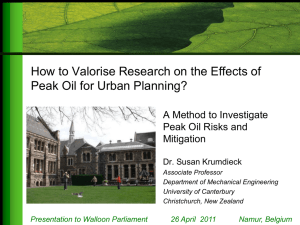7 Billion going on 10 Billion
advertisement
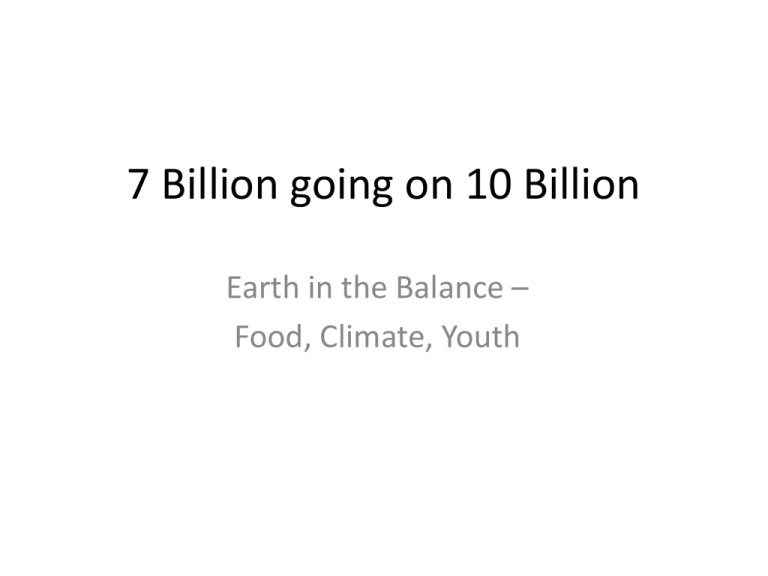
7 Billion going on 10 Billion Earth in the Balance – Food, Climate, Youth World Population Trends • Population growth is slowing: – 1960: 3 Billion; 1980: 4.5 Billion; 2000: 6.1 Billion – 2040: 8.9 Billion; 2060: 9.6 Billion; 2085: 10 Billion • But local growth is still strong in Africa, South Asia, and the Middle East • Two population groups are growing very fast, much faster than world population – Urban Population – Global Middle Class Total Population: USA, Europe and Sub-Saharan Africa 4000 3500 3000 2500 Europe 2000 1500 Sub-Saharan Africa 1000 USA 500 0 1950 1980 2010 2040 2070 2100 Illustrations of Local Population Growth (millions – M/H/C) 2010 2050 2100 Nigeria 158 390/433/504 730/1024/2660 Uganda 33 94/106/144 171/246/1095 Niger 15 55/61/76 139/188/690 Tanzania 44 138/155/170 316/449/1003 Ethiopia 83 145/166/243 150/236/961 An Urban World 6000 5000 4000 Urban Rich World 3000 Urban Dev. World 2000 1000 0 1950 1970 1990 2010 2030 2050 The Global Middle Class Millions 10000 8000 World 6000 Rest of world 4000 North Am. & Europe 2000 0 2009 2020 2030 The Global Middle Class OECD Projected Spending in millions of 2005 PPP-adjusted dollars 120000 100000 80000 World 60000 Rest of world 40000 North Am. & Europe 20000 0 2009 2020 2030 Probable Consequences • Magnified and Accelerated Climate Change – More Cars, Travel, Consumption, Waste, Urban concentration • Chronic Food Crises – Higher consumption of meat and processed foods • More frequent and more intense Humanitarian Crises – More people living in more vulnerable areas with higher risks What to do? • Prepare for the worst • Innovate in Urban and Regional Construction and Planning – More energy and travel efficient, more social cities (From the 19th to the 21st Century) • Change Diets (for Health and Well-being) • Tax Carbon, waste, excess consumption
